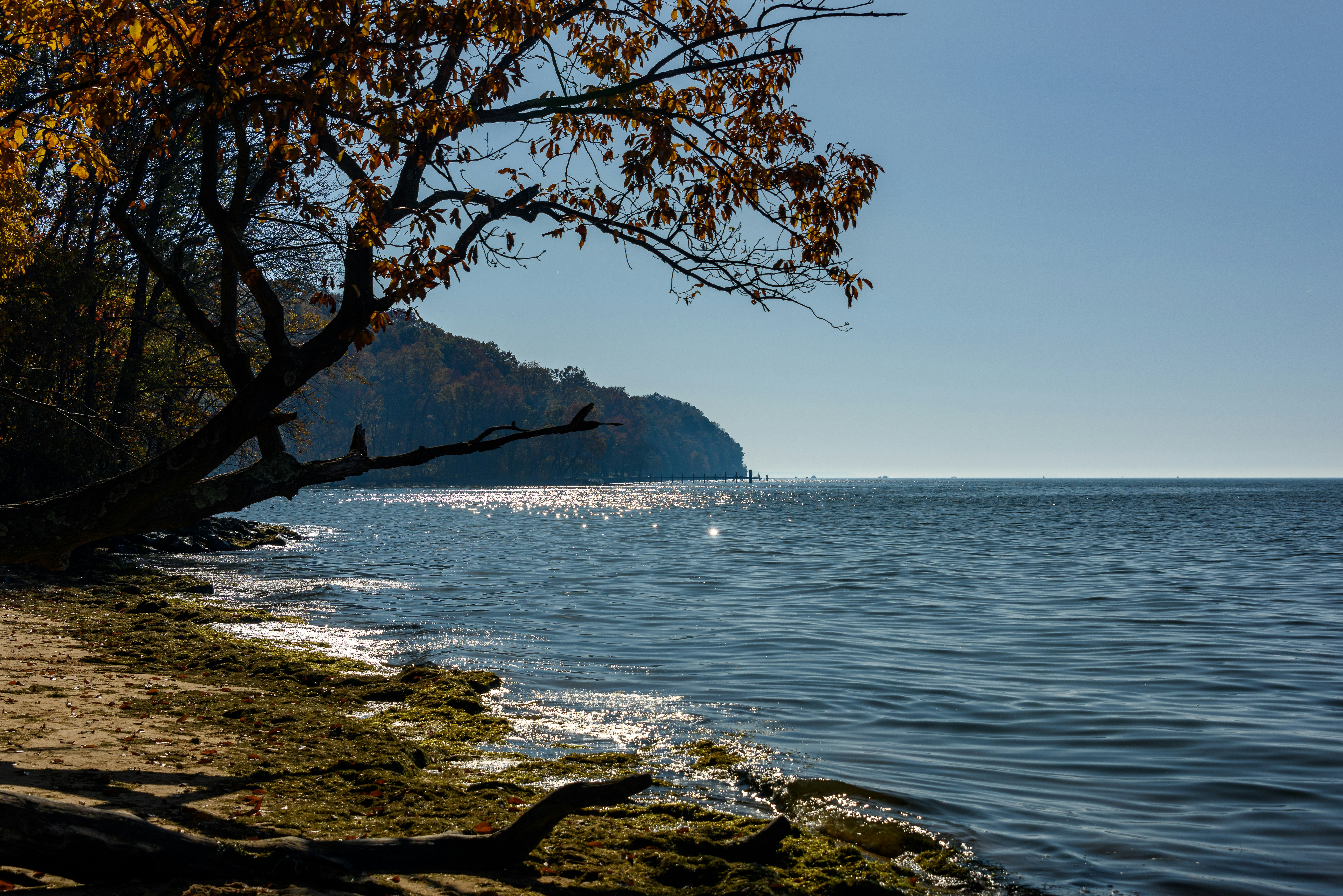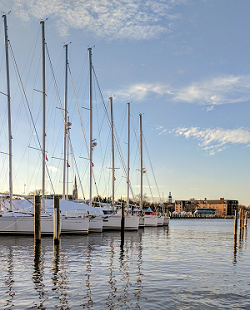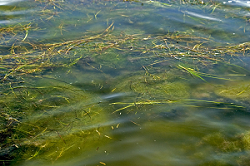 Photo by Steve Adams on Unsplash
Photo by Steve Adams on Unsplash
The Chesapeake Bay is the largest estuary in the nation and the third largest in the world.
Three Maryland agencies bear particular responsibility for Bay matters. The Department of Agriculture directs the Office of Resource Conservation which oversees Chesapeake Bay Agricultural Programs. The Department of the Environment works on behalf of the Bay through its Water and Science Administration. The Department of Natural Resources supports the work of the Critical Area Commission for the Chesapeake and Atlantic Coastal Bays (formerly Chesapeake Bay Critical Area Commission) and oversees Aquatic Resources.
The rivers, creeks, streams, and smaller bays which flow into the Chesapeake Bay, the land surrounding them, and the Bay itself make up the Chesapeake Bay watershed. About 51 billion gallons of fresh water empty into the Chesapeake Bay daily from the 150 major rivers and over 100,000 tributaries. Three main tributaries flow into the Bay, and contribute 80% of the Bay's fresh water. The largest of these is the Susquehanna River, followed by the Potomac River, and Virginia's James River. The watershed runs about 524 miles, from New York to Virginia, while the area itself totals some 64,000 square miles in parts of six states: Maryland, Delaware, Pennsylvania, New York, Virginia, West Virginia, and the District of Columbia. Maryland, Delaware, and Pennsylvania work together on the Bay's behalf through the interstate Chesapeake Bay Commission.
Over the last two decades, Maryland has raised and deployed more than $2 billion to upgrade 67 major wastewater treatment plants throughout the state. We have prevented more than 8.5 million pounds of nitrogen from reaching our waterways each year, and upgraded more than 12,500 septic systems. We have also connected more than 1,300 homes to public sewer. But there is more to do.
Excess Nutrients are Harming the Chesapeake Bay
Our Bay is Polluted
 Sailboats docked on Spa Creek.
Sailboats docked on Spa Creek.
Image courtesy of Michael Miles - MDE.
Excess nutrient pollution is the leading cause of the decline and degradation of the Chesapeake Bay and its tributaries. Water quality had been in decline since the 1950s and was taking a turn for the worse; by the 1970s the Chesapeake was at a tipping point where aquatic life was rapidly disappearing from the Bay's waters.
Scientific Study Determines the Cause
To determine the cause of the failing Bay health, U.S. Senator Charles “Mac” Mathias (R-Md.) sponsored a Congressionally funded $27 million, five-year study (PDF - leaving MDE). The study was published as a series of reports in the early 1980s and identified excess nutrient pollution as the leading cause of Chesapeake bay degradation.
What is an Estuary?
Estuaries are transitional ecosystems between the land and sea where freshwater and saltwater meet.
The Chesapeake Bay is the largest estuary in the United States and is among the most productive and valuable ecosystems in the world.
Learn more
Humans are Responsible for Polluting the Bay
Interfering with a Natural Cycle
The Chesapeake Bay is a dynamic and complex body of water that acts as a living system. Nutrients, primarily nitrogen and phosphorus, are naturally present and are essential to life in the Bay. However, too many nutrients cause the health of the Bay to decline. If left unchecked, nutrient pollution severely depletes the water of oxygen and causes the ecosystem to collapse by a process known as eutrophication.
Humans are Over Fertilizing the Bay
Humans are directly responsible for the excess nutrients that enter and damage the Chesapeake. This nutrient pollution comes from fertilizing lawns, gardens, and farms. Nutrient pollution also comes from urban sources, including exhaust from automobiles, wastewater, septic systems, and stormwater runoff. These nutrients are overwhelming the Chesapeake’s already weakened natural filters and have resulted in a significant loss of wildlife.
The Historical Removal of the Bay’s Natural Filters
 Excess nutrients fuel algal blooms that damage the Bay.
Excess nutrients fuel algal blooms that damage the Bay.
Image courtesy of Adrian Jones - IAN.
Human activity has severely diminished the Chesapeake's filters and buffers over the past 100 years. Natural filters and buffers consist of wetlands, riparian forests, and oysters that offer protection from storms and filter nutrients from the Bay. However, humans have disrupted, damaged, and removed many of these filters and buffers, leaving the Bay’s natural systems in a highly degraded state.
Learn more about how excess nutrients harm the Bay.
A Collaborative Cleanup Effort
Federal, State, and Local Government entities work together to restore the Chesapeake.
Maryland works closely with these valued partners to ensure we reach our State's Bay cleanup goals and preserve our National Treasure for future generations.
Learn More
Maryland as a Leader in Chesapeake Bay Restoration
Determining a Healthy Level of Nutrients for the Bay
With science, it is possible to determine how much pollution a body of water can receive while still meeting State water quality standards. This calculated pollution limit, known as a Total Maximum Daily Load (TMDL), establishes regulated pollution limits to maintain a healthy and vibrant Bay.
Reducing Nutrient Pollution to Clean the Bay
During the early 2000s, it was evident that voluntary Bay cleanup efforts were lagging and poor water quality still plagued the Chesapeake. As a result, on December 29, 2010, the U.S. Environmental Protection Agency established the Chesapeake Bay Cleanup Plan. The cleanup plan, known as the Chesapeake Bay Total Maximum Daily Load (leaving MDE), set federally regulated limits of nitrogen, phosphorus, and sediments across Bay jurisdictions to meet water quality goals that are to be achieved by the year 2025.
Learn more about Maryland's Chesapeake Bay Cleanup Plan.
Maryland’s Role in Chesapeake Bay Restoration
 Steamed crabs, fresh from the Bay, are a summertime favorite in Maryland.
Steamed crabs, fresh from the Bay, are a summertime favorite in Maryland.
Image courtesy of Michael Miles - MDE.
Since the first Bay restoration efforts, Maryland has been a pioneer in Chesapeake Bay Cleanup. While all Bay states stand much to gain from a healthy Bay, Maryland by far stands to benefit the most. The Chesapeake Bay is much more than just a body of water to Maryland; it is part of our national identity.
The Chesapeake Bay is as much a part of Maryland as it is to shout "O" during the National Anthem while at a baseball game, to enjoy steamed crabs during a midsummer's day, or to see our State flag's vibrant colors waving in the wind. It forms a cornerstone of our local economy, drives tourism, and provides a place for Marylanders and wildlife alike to proudly call home.
Learn more about how you can get involved in local Bay cleanup.
Learn more about Chesapeake Bay cleanup progress.
Up next: What Makes the Chesapeake Special?
The Chesapeake Bay is closely tied to Maryland's national identity. It provides countless environmental, social, and economic benefits and is among the most biologically productive ecosystems in the world.
Learn more about Maryland's National Treasure.
Contact Information